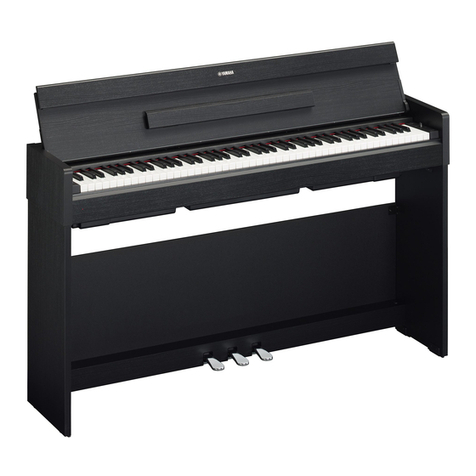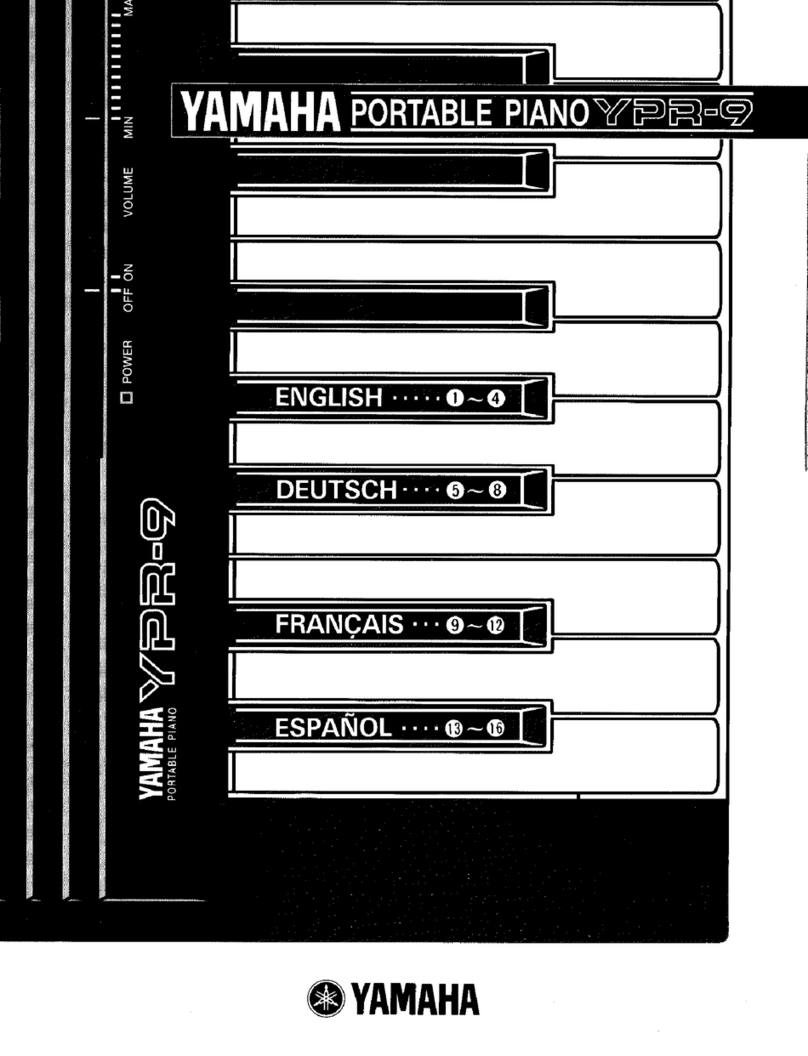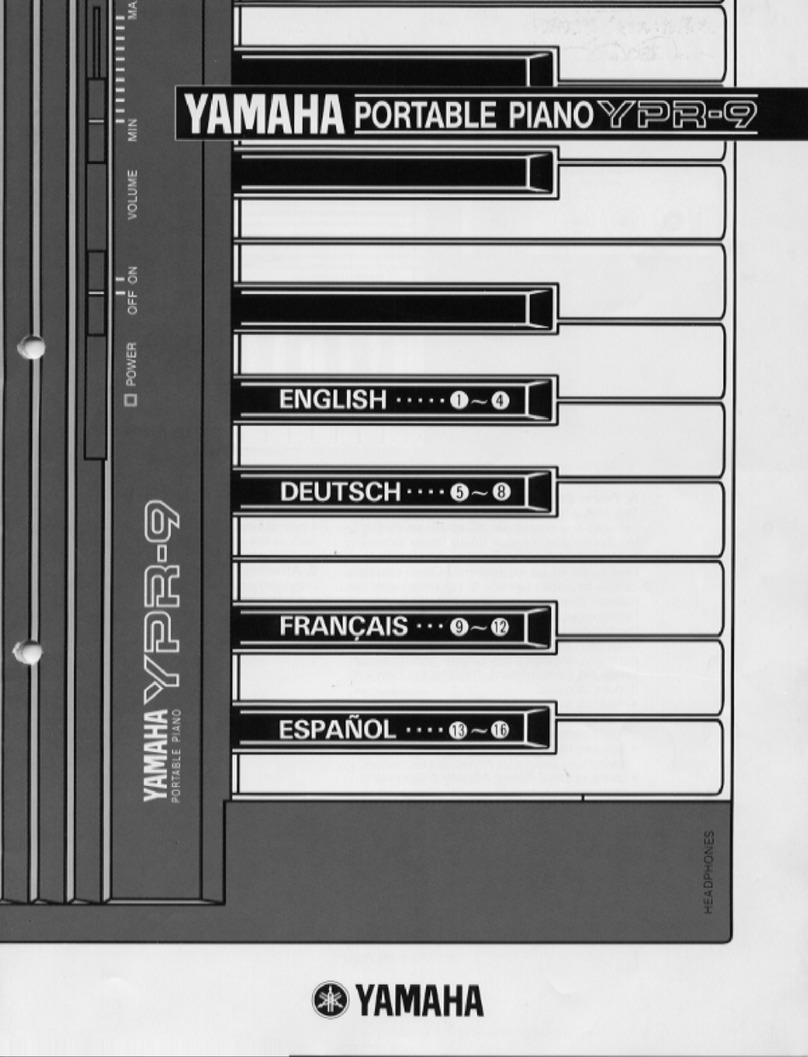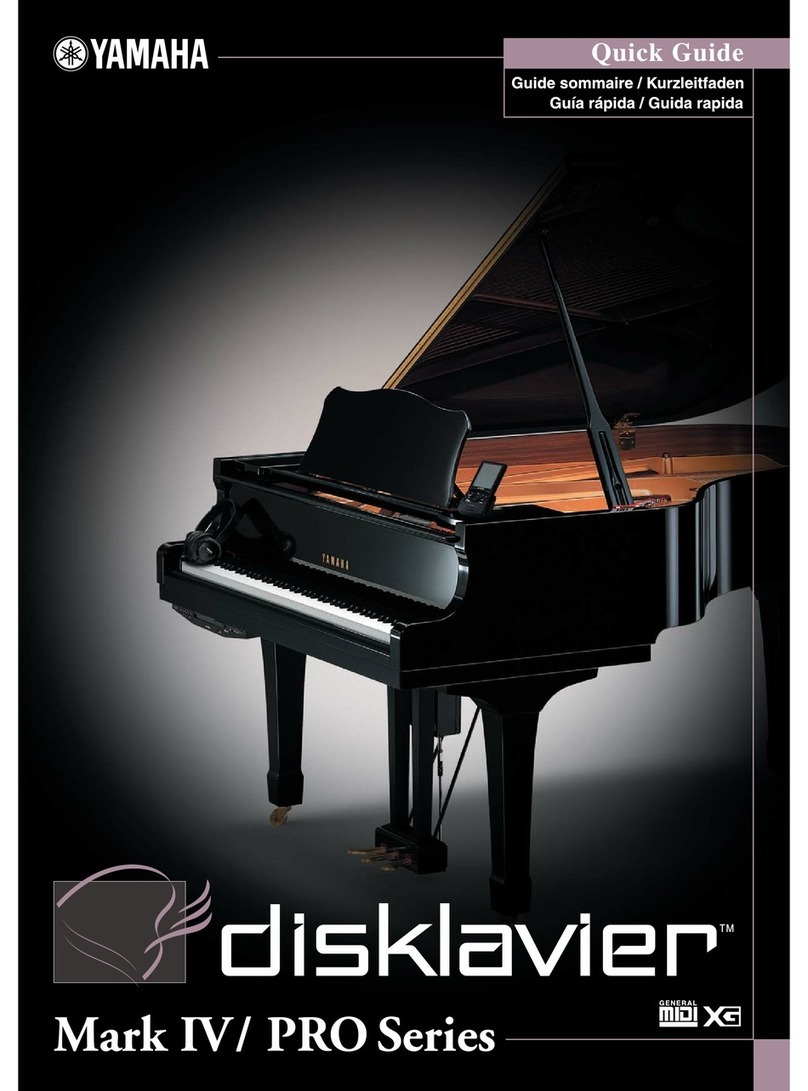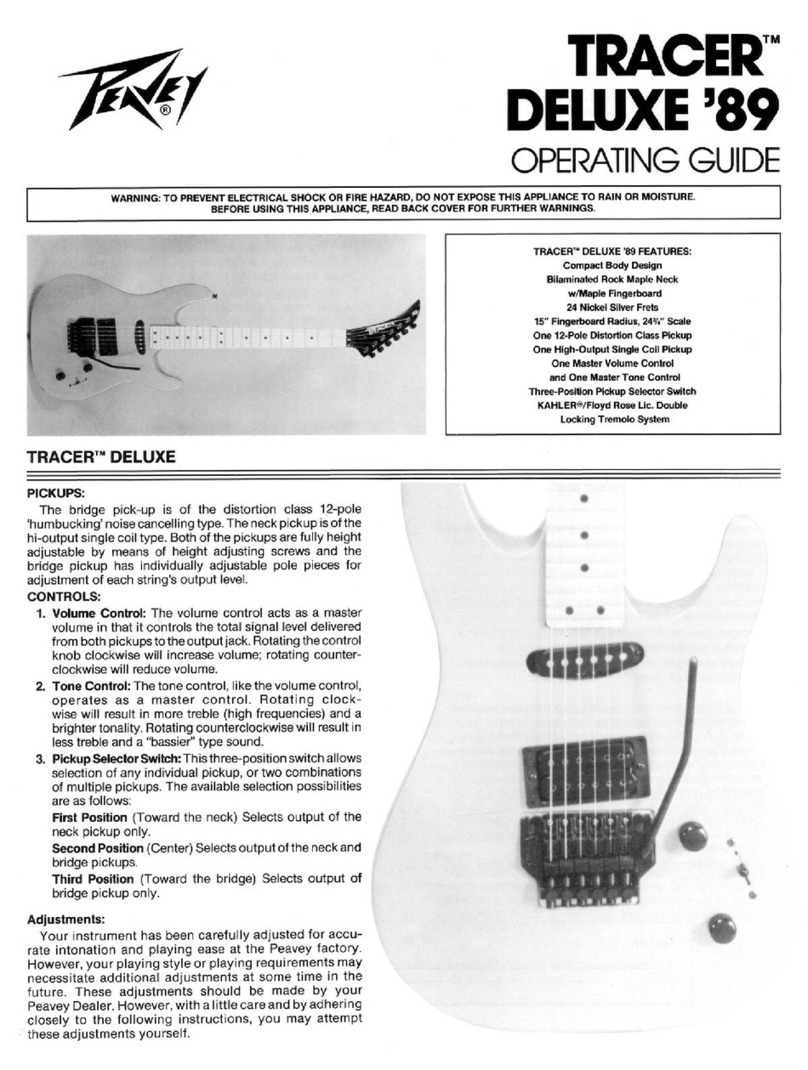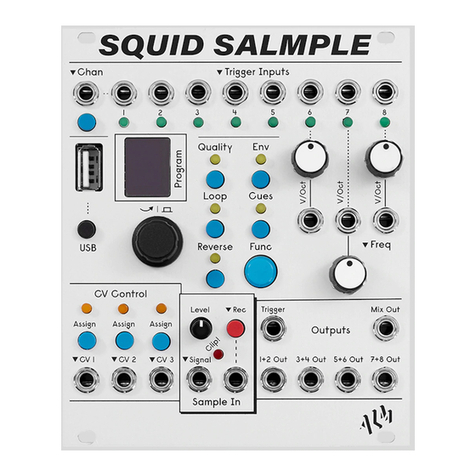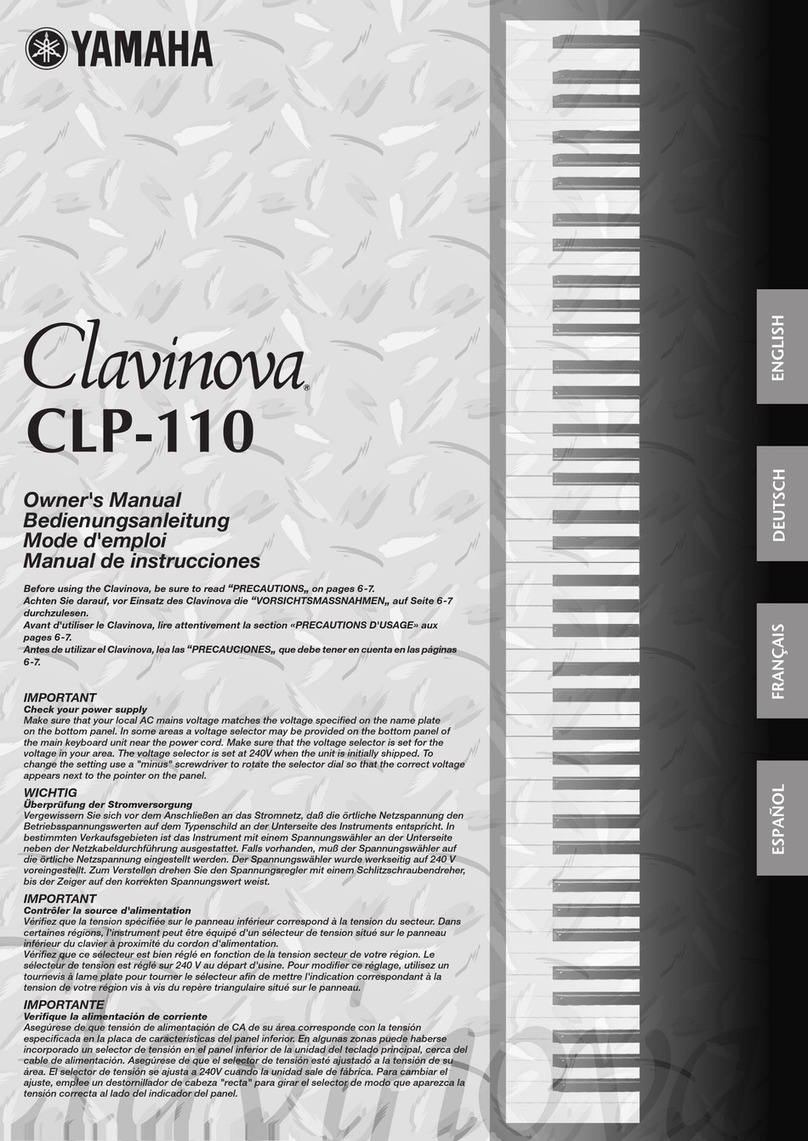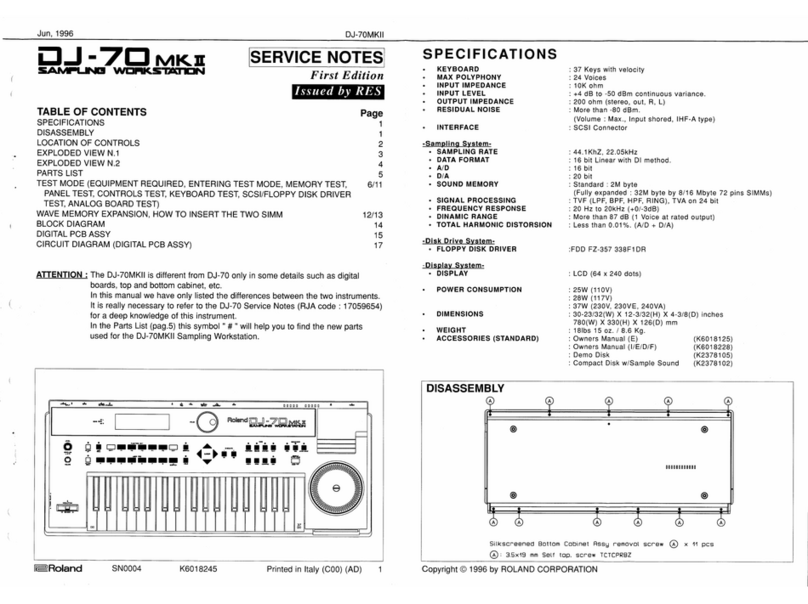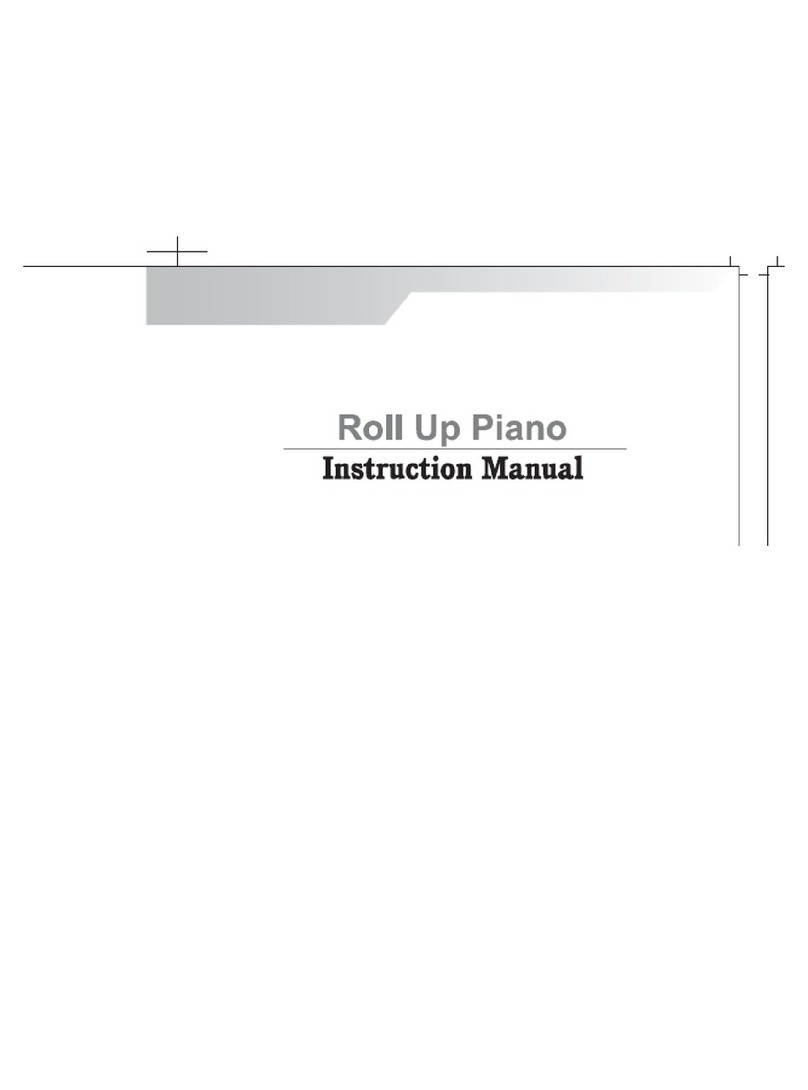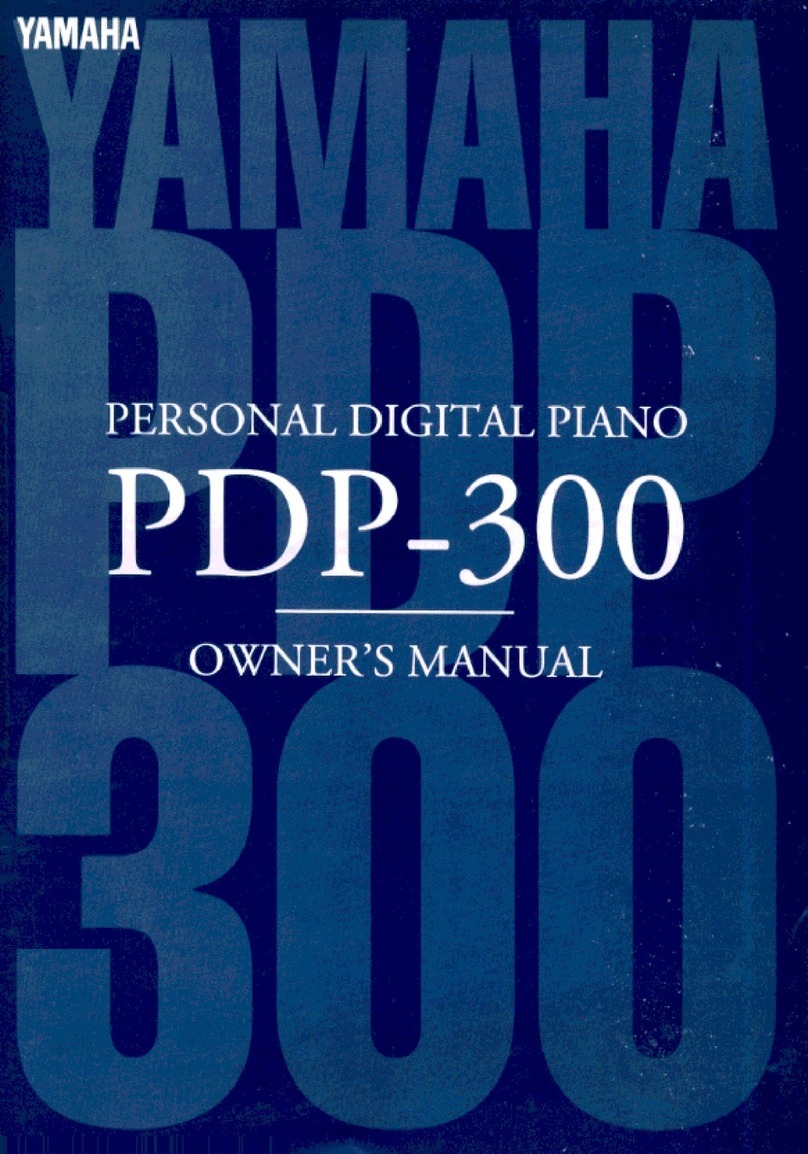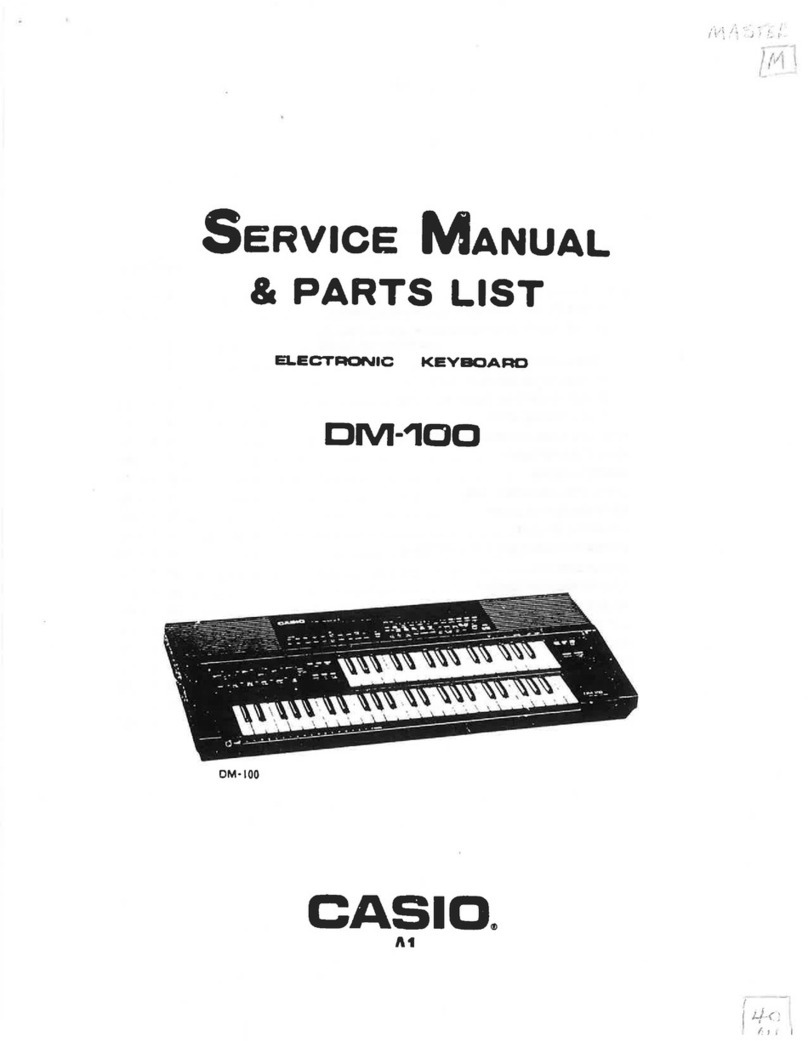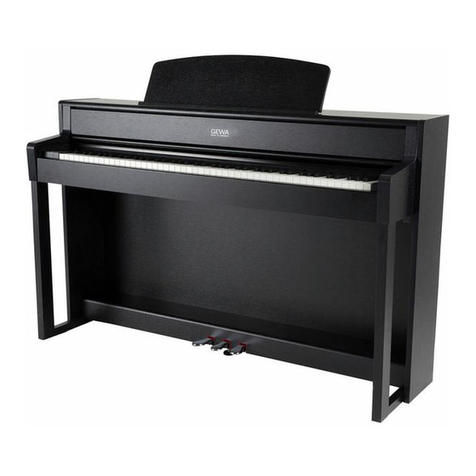Rodgers Instrument Corporation 520 User manual

I:'\STRDIENT
CORPORATlO:-;
The soundchoice!
~
ROffiERS

PATENTS
G.B. 1312161
F.R.G. 22 02 658
CANADIAN 951550
(1974)
WARNING:
TO REDUCE THE RISK
OF
FIRE OR ELECTRIC
SHOCK, DO NOT EXPOSE
THIS APPLIANCE
TO
RAIN
OR MOISTURE.
ATIENTION:
RISQUE DE CHOC ELECTRIQUE NE PAS OUVRIR
1--
.....
---'
A.
RISK OF ELECTRIC SHOCK
DO NOT OPEN
The lightning flash with arrowhead symbol,
within
an
equilateral triangle,
is
intended to alert
the user to the presence of uninsulated
"dangerous voltage" within the product's
enclosure that may be of sufficient magnitude to
constitute arisk of electrical shock to persons.
REFER SERVICING TO QUALIFIED
SERVICE PERSONNEL.
CAUTION: TO REDUCE THE RISK OF
ELECTRICAL SHOCK:
DO NOT REMOVE COVER
OR
BACK.
NO USER-SERVICEABLE PARTS INSIDE. The exclamation point within the equilateral
triangle is intended to alert the user to the
presence of important operating and
maintenance (servicing) instructions
in
the
1--
....
literature accompanying the product.
NOTICE TO USERS
Information
in
this document is subject to change without notice. No
part of this manual may be translated into any language, stored
in
a
retrieval system, reproduced or transmitted in any form or by any
means, electronic or mechanical, including photocopying and recording,
for any purpose without the express written permission of Rodgers
Instrument Corporation.
RODGERS INSTRUMENT CORPORATION
1300 N.E. 25th Avenue
Hillsboro, Oregon 97124
(503) 648-4181
RODGERS CANADA
5480 Parkwood Way
Richmond, B.C. V6V 2M4
(604) 270-6332
©Copyright 1994, Rodgers Instrument Corporation, amember
of
the Roland Group. All rights reserved. Printed in Italy. July 1994.
Rodgers®Classic Organs'" and Rodgers®
DVM'"
(Digital Voice Module) are trademarks of Rodgers Instrument Corporation.

~
ROlLERS
520/530 Quick Reference Voicing Guide
Note: Setexpression controls to maximum before making alterations.
To
Enter The Installation Mode:
1.
Turn the organ
"off'.
2. Press and hold "set" and
"0"
pistons simultaneously.
3. Turn the organ "on".
4. Release the
"set"
and
"0"
pistons.
5.
The
fIrst five piston lamps
on
the panel will light
to
indicate the "Installation Mode".
6. Each one
of
these five pistons is associated with aparameter setting:
Piston 1Reverb setting for each tone group
Piston 2Chorus setting for number
of
activated tone group
Piston 3
Pan
Pot
setting for each tone group
Piston 4TremulantRate
Piston 5Celeste Detune
To
Adjust Reverberation Depth Setting:
1.
Press piston
"1".
2. Select the stop in the division
to
be
modified. Wait for other stops in the tone group to
light
Note: Pedal slider controls reverb type.
Swell expression pedal controls reverb length.
Great slider controls reverb depth.
3. Confrrrn settings by pressing "set"
or
cancel by pressing "0".
4. Repeat from step 1for each tone group.
To
Adjust Voice Pan Setting (Pan Pot):
1.
Press piston
"3".
2. Press and hold the stop to
be
modified. The other stops in the tone group will light.
3. Release the stop.
4. Use the great volume slider to position the voice in achannel.
5. Confrrrn settings
by
pressing "set"
or
cancel by pressing "0".
6.
Repeat from step 1for each tone group.
To
Adjust Chorus Setting:
1.
Press piston
"2".
2. Press and hold the stop to
be
modified. Other stops in the tone group will
light
Note: Pedal slider controls chorus type.
Swell expression pedal controls chorus length.
Great slider controls chorus depth.
3. Adjust sound
of
one tone group.
4. Select stop from another tone group and adjust parameters
of
second (new) tone group.
5.
Select stop from another tone group and adjust parameters
of
third (new) tone group.
6. Confrrrn settings by pressing "set"
or
cancel by pressing "0".


Tone
Group
1
8'
Principal
8'
Gemshorn
T
Super~ffive
Tone
Group
2
8'
Trompete
4' Ocffive
IV
Mixture
Tone
Group
8
16'
Bourdon
8' Gedackt
4' Spitzf10te
11/3' Quintflote
©Copyright 1994
Tone
Group
3
8' Bourdon
4' Koppelflote
22/3' Nazard
2'
Blockflote
11/3' Tierce
Tone
Group
4
8'
Viola
IV PleinJeu
16'
Fagott
4' Clairon
Tone
Group
5
8' Viola Celeste
4' Principal
8' Hautbois
Pedal:
Tone
Group
6
16'
Principal
8'
Gedackt
4' Choral Bass
Tone
Group
7
16'
Subbass
8' Ocffive
16'
Posaune
~
ROIGERS
INST1UMn~'T
CORPOlATION
The
sound
choice!
l300
N.E.
25th
Avenue.
Hillsboro.
Oregon
mu
•
GOJ)
&1&4181
PIN
1005-257


SAFETY
INSTRUCTIONS
INSTRUCTIONS PERTAINING TO ARISK OF FIRE,
ELECTRIC SHOCK OR INJURY TO PERSONS
IMPORTANT SAFETY INSTRUCTIONS
WARNING: When
using
this
instrument, always
follow
basic precautions,
including
the following:
1.
Read all
the
instructions before using, adjusting or
repairing this instrument.
2.
To reduce the risk of injury, supervise children closely
when they are around the instrument.
3. Use this instrument only
in
the manner recommended by
Rodgers Instrument Corporation.
4.
Do
not use this instrument near water, for example, near a
swimming pool or adampiwet room.
5.
Use of this instrument, either alone or
in
combination with
an amplifier and headphones or speakers, may be capable
of producing sound levels that could cause permanent
hearing loss. DO NOToperate for along period of time at
ahigh volume level or at alevel that
is
uncomfortable.
If
you experience any hearing loss or ringing
in
the ears, you
should consult
an
audiologist.
6.
Locate the instrument so its position does not interfere
with its proper ventilation.
7.
Locate the instrument away from heat sources such
as
radiators, heat registers or other products that radiate heat
directly onto the instrument.
8.
Protect the instrument from dust as much as possible.
9.
Connect
the
instrument
to
apower source only of the type
described
in
the operating instructions or
as
marked
on
the
instrument.
Do
NOT attempt
to
defeat the grounding
conpection of the three-prong allachment plug.This is a
safl:lty feature.
If
you are unable
to
insert the plug into
the
outlet, contact
an
electrician
to
replace your obsolete
outlet.
Do
NOT defeat the safety purpose of the plug.
10. Unplug the power cord of the instrument from
the
power source when left unattended for along period
of time.
11.
Do
not walk
on
or place objects
on
top of the power
cord.
12.
Do
not pull the cord
to
unplug. Hold
the
plug
when
unplugging from
the
power source.
13. When setting
up
with other instruments or peripherals.
follow the procedures
in
accordance with Rodgers'
owner's manual.
14. Take care that objects do not fall or liquids spill into
the instrument.
15. Service the instrument with qualified service
personnel when:
a.
The power cord or plug has been damaged.
b.
Objects have fallen or liquid has spilled into
the
instrument.
c.
The instrument has been exposed
to
rain or other
weather damage.
d.
The instrument does not appear
to
operate
normally or exhibits amarked change
in
performance.
e.
The instrument has been dropped or the enclosure
has been damaged.
16.
Do
not
allemptto
service the instrument beyond that
described
in
the owner's manual. Refer all other
servicing
to
qualified technical service personnel.
WARNING: THIS INSTRUMENT MUST BE EARTH GROUNDED.
You must GROUND instruments equipped with aTYPE AC, 3WIRE GROUND PLUG.
SAVE THESE INSTRUCTIONS

Radio and Television Interference
The Rodgers 520/530 uses and generates small amounts
of
radio-frequency (RF)
energy. The instrument complies with the limits set for Class Bdigital devices. FCC
Rules, Part
15,
Subpart Bdefine the limits for radio and television interference in a
residential installation.
Follow the installation and the use instructions in the manual, or the instrument could
potentially cause interference with some radio
or
television reception. In the unlikely
event this occurs, we encourage the user
to
try the following corrective measures:
tt'
Tum
the instrument OFF to see if it
is
the actual source
of
the
interference.
Disconnect the peripheral devices and their input/output cables one
at atime.
If
the interference stops, it
is
caused by the peripheral
device
or
its I/O cable.
Try coiling and uncoiling the instrument's power cord in different
ways.
Connect the instrument's power cord
to
apower outlet on a
different circuit.
Move the instrument farther away from the radio or television
receIver.
tt'
Tum
the radio
or
television receiver until the interference stops.
Connect the radio or television receiver
to
adifferent power circuit.
Reorient or move the receiver antenna farther away from the
instrument."Consider installing arooftop antenna with coaxial
cable lead-in between the antenna and receiver.
Consult the nearest Rodgers dealer for more information
if
the
above corrective measures
don't
remove the interference.
11

Table
of
Contents
CAUTIONS and Notice
to
Users
Safety Instructions
FCC Notice
Table
of
Contents
Overview
of
the 520/530
Brief
Tour
Turn On/Turn
Off
Divisions
Selecting
or
Retiring aStop
Combination Action
Couplers
Tremulants
Expression Pedal
Crescendo Pedal
How To Set The Crescendo
Tutti/PLl/PL2
How To Set The Tutti/PLI/pL2
Tuning Control
Transposer Control
Reverb Level
The Automatic Pedal
How To Set The Automatic Pedal
Bass Coupler
Melody Coupler
User 1/0 Panel
MIDf
In/Out/Thru
Auxiliary Inputs (Left and Right)
Auxiliary Outputs (Left and Right)
Master Volume Control
Headphone Jack
inside cover
11
III
page 1
page 2
page 2
page 2
page 3
page 3
page 4
page 4
page 5
page 5
page 5
page 5
page 5
page 6
page 6
page 6
page 6
page 6
page 7
page 8
page 9
page 9
page 9
page 9
page 9
page 9
111

IV
MIDI
(Musical
Instrument
Digital
Interface)
Sending aProgram Change
Velocity Information
Channel Reassignment
Octave Transpose
Enabling/Disabling MIDI Master Channels
GS
Format Sound Selection Instructions
Saving aCombination Memory
Receiving aProgram Change
How To Set PG/SYS-EXE
Local On/Off
Common MIDI Connections
520 /530 Specifications
Care
and
Maintenance
Suggested Registrations
MIDI
Implementation
MIDI Features
Implementation Chart
System Exclusive Code
page 10
page
10
page
10
page
12
page
12
page
13
page 14
page
16
page
17
page
17
page
18
page
19
page 20
page
21
page 22
page 34
page 36
page 37

IOVERVIEW OF THE 520 /530
Thank
you for choosing the Rodgers 520/530. These instruments are high quality classical
organs in both
sound
and construction, designed to provide years
of
reliable service.
Theseinstruments are two-manualclassical organs that incorporatean eclecticspecification
and authentic pipe
organ
sounds. The 530 has 28 speaking stops, expression and crescendo
pedals, tutti control, atwo-channel (stereo) audio system andmany otherfeatures. The 520 has
25 speaking stops, expression pedal, atwo-channel (stereo) audio system and many other
features.
The console is constructed
of
the finest woods and veneers, suitable
in
the most elegant
surroundings. It is unsurpassed
in
beauty and longevity.
The 520/530 utilize lighted tilt tab stop controls. Traditional couplers are included,
as
well
as
an adjustable combination action (pistons) with 2memories.
These instruments are completely voiced and tuned for optimum tonal authenticity. A
Rodgers factory-trained technician can provide additional voicing and finishing as required.
The
520
and 530
offer
full MIDI (Musical InstrumentDigital Interface) capability, allowing
the organist to control other MIDI devices (keyboards, sequencers, rhythm units, sound
modules, etc.).
MIDI
allows the performer full recording and playback capabilities using an
external MIDI device.
Rodgers 520 and
530
organs are built
in
Italy. Through the most advanced technology
available, the Rodgers Instrument Corporation, amember
of
the Roland Group, delivers
proven reliability, design innovation and atradition
of
musical excellence, marking
our
position as
The
sound
choice!
Celebrating Tradition
...
Creating the Future!

lliiiiiiII
1,.1
iii
B
RiiiIEiiiF
iiiTOiiiURiiiiiiiill1
To get started, here is abrief tour
of
the basic operations
of
the Rodgers 520/530 organs:
TURN ON/TURN OFF
To turn the organ on, press the power rocker switch at the bottom. The power lamp will light,
indicating the power is on and the organ
is
ready to play. To turn the power off, press the power
rocker switch at the top. The organ
is
powered off.
DIVISIONS
The following groupings
of
stops (tilt tabs) affect the indicated manuals (keyboards)
or pedalboard:
MODEL 520
I
::.
GREAT GENERALS
-r-
'.,
\\
::L
SWELL
EXPRESSION
iii
\ \
o
000000
0
PEDAL
\'.,-----',.-1
\\
PEDAL SWELL
-,-
/ \ J
GREAT GENERALS
7X
MODEL 530
f.
~,\!~~\,~\~,~\~
e
86960000
0 0 J
--I
2

SELECTING OR RETIRING ASTOP
Press the bottom
of
the desired tilt tab
to
tum it on. It will light, indicating
it
is
on. Press the top
of
the tilt tab
to
tum offthe stop. The light will go off, indicating the stop
is
off.
COMBINATION ACTION
(Pistons)
The 520 and 530, feature acombination action easily changed
by
the
organist from the console.
The organist can pre-select favorite registrations and make rapid changes
in
tone color using this
advanced system. The pistons will light when pressed. The piston labeled
"R"
restores the last Free
Panel setting.
MODEL 520
-L
SWEll
ElPRESSlCH
MODEL 530
mAHSPOSE
CONTROL
SWELL
EXPRESSiON
-
~
Wi
I
\I
n,
How To Set The Pistons:
1.
Select amemory by pressing M1
or
M2.
2.
Select the stops desired.
3.
Press the SET piston and hold.
4. While holding the
SET
piston, press the desired combination piston, and then release both
pistons simultaneously.
3

COUPLERS
Couplers enable stops
of
one Division
to
be played on
another keyboard
or
pedalboard. The couplers on the
520/530
models are
GREAT TO PEDAL, SWELL TO PEDAL and SWELL TO GREAT.
;j..
\
L~"---~-""
!
/
..
~
, ,,
,
,
j
TREMULANTS
Tremulants create changes in pitch (sharp and flat)
or
amplitude (volume). The use
of
tremulants
adds warmth
to
solo
or
small ensemble combinations and
is
useful
in
gospel and romantic music.
The
520/530
have aSWELL TREMULANT which
is
useful for classical music. The
TREMULANT
is
adjustable for both speed and depth. It is recommended that these adjustments be
made
by
AFactory-Trained Technician.
4

EXPRESSION PEDAL
The pedal on the left controls the overall volume
of
the Swell Division. This pedal
is
used
to
give
variety
of
expression to the music played. Pressing the pedal forward increases the volume; drawing
back decreases the volume.
CRESCENDO PEDAL (Only 530)
The pedal
to
the right
of
the Expression Pedal
is
the CRESCENDO Pedal, which gradually adds a
user pre-determined selection
of
stops
as
it
is
pressed forward. The CRESCENDO Pedal does not
affect the stops already set
up
on the organ, but merely adds to them. Stops added by the CRE-
SCENDO Pedal do not light.
When the CRESCENDO Pedal
is
in
use, the Crescendo indicators will light (from left
to
right)
as
the pedal
is
depressed and more stops are added. Achange in the setting
of
the crescendo differing
from the sequence set at the factory may be desired.
~
How
To Set
The
Crescendo:
1.
While holding piston Rand piston
1,
press the 0(General Cancel) piston.
2. Move the CRESCENDO Pedal; the stops contained in the current step number will light.
Set the desired stop configuration for the current step number.
3. Press the SET button and the stop configuration
is
stored
as
the current step number.
4. Repeat steps
1-3
to set the remaining Crescendo step numbers.
TUTTI /
PLI
/PL2 (Only 530)
There are times when different full organ registrations are needed immediately. The 530 model
is
equipped with aTutti, PL1and PL2 toe pistons. Press the toe piston
to
tum on the Tutti,
PL
Ior PL2,
and press again
to
tum it off. When Tutti, PLI or PL2 are on, the relative indicators light. When
these preset combinations are activated, the selected tilt tabs do not light. These "Factory"
combinations can
be
user adjusted.
c&-
How
To
Set
The
Tutti!
PLI!
PL2 Toe Piston Combinations:
1.
Press and hold down the
Rand
1piston.
2.
While holding these pistons, press the 0(General Cancel) piston.
3.
Press the Tutti,
PLI
or PL2 piston; the current relative stop configuration lights.
4. Set the new desired stop configuration.
5. While holding the SET piston, press the Tutti, PLI or PL2 piston, and then release both
pistons simultaneously.
5

TUNING
CONTROL
The 520 and 530 organs are equipped with aTUNING control. This allows the entire organ to be
tuned easily and quickly to apiano
or
musical instrument not at standard concert pitch (A=440).
If
the TUNING control is pushed in, the organ will remain at standard concert pitch, and turning the
control will have
no
effect. To alter the pitch, press the TUNING control until it moves outward and
clicks, then tum the control to set the pitch.
TRANSPOSER
CONTROL
Turning the TRANSPOSER control will raise or lower the pitch
of
the organ up to four semitones
(half steps) flat, and up to three semitones sharp. Many singers need akey change to accommodate
their voice range. The TRANSPOSER is especially useful for accompanying soloists, eliminating
the need to mentally transpose printed music into amore suitable key. The TRANSPOSER helps the
organist accomplish this effortlessly.
REVERB
LEVEL
This control adjusts the total amount
of
digital reverberation affecting the organ voices.
THE
AUTOlVIATIC PEDAL (Only 530 )
The 530 model
is
equipped with auseful function called "Automatic Pedal". This function allows
you
to
automatically adjust the sound volume
of
the "Pedal" section depending on which manual
you are playing. When the "Great
to
Pedal" coupler
in
ON, it is automatically set On and
Off
depending on the manual that
is
actually in use. For example
if
you are playing ONLY on the Swell
manual and the
PA
function
is
on, then the coupler effect
is
disabled (the light remains on). Playing
the Great manual or both, then the coupler effect
is
enabled.
n,
How To Set The Automatic Pedal Function:
1.
Press and release the PA piston to set On and
Off
the Automatic Pedal function.
2. The relative lamp will light indicating the status
of
the PA function.
6

THE
BASS
COUPLER
This feature's name is derived from the ancient term "Basso Continuo," meaning thoroughbass.
When this piston is pressed, it will light. Any stops
or
couplers on in the Pedal Division will sound
from the lowest key being played on the Great manual. This provides apedal bass without having to
actually play the pedalboard with the feet.
In its normal setting, the BASS coupler affects keys 1through
24
of
the Great manual, but its
range
is
programmable.
.....
How
To
Set
The
Range
Of
The
Bass
Coupler:
1.
Hold
SET
and press the BASS coupler, which will start flashing.
2. Release the
SET
piston and the BASS coupler.
3. While the BASS piston is flashing, press akey which corresponds
to
the highest note the range
is
to
extend. Any note from key 1to key 32 may be selected. After the selected key has been
pressed, the BASS piston will stop flashing.
Note: When akey
is
pressed
to
set the range, no sound will be heard even ifstops are on, so no
disturbance will be made if programming during aperformance. This setting
is
not saved into
combination memory.
7

THE MELODY COUPLER
When the MELODY coupler
is
pressed,
it
will light. Any stop
or
coupler
of
the Swell Division
will sound from the highest key being played on the Great manual. This allows asolo melody and an
accompaniment to be played from the same manual.
In its normal setting, the MELODY coupler affects keys 25 through
61
on the Great manual, but
its range
is
programmable.
n.,
How
To
Set
The
Range
Of
The
Melody
Coupler:
1.
Hold SET and press the MELODY coupler, which starts flashing.
2.
Release the SET piston and MELODY coupler.
3.
While the MELODY coupler
is
flashing, press akey which corresponds
to
the lowest note
of
the desired range. Any note from key 1
to
key
61
may
be
selected. After the selected key has
been pressed, the MELODY coupler will stop flashing.
Note: This setting
is
not saved into combination memory.
8

USER 1/0 PANEL
The
Rodgers
USER
I/O
PANEL
allows the organist to conveniently make audio input/output,
Total Volume Control and MIDI In,
Out
and Thru connections. This panel is located on the rear
panel
of
the instrument.
The
following descriptions detail the controls and their functions:
MIDIIN/OUT/THRU
These are the
jacks
used
to
connect the Rodgers organ to an external sequencer, voice module,
computer
or
other external MIDI device
or
instrument.
AUXILIARY INPUTS (Left and Right)
These are
AUXILIARY
AUDIO INPUTS allowing the organist to connect the audio outputs
of
a
MIDI
voice module, cassette player, compact disc player
or
other stereo audio device to the organ.
This allows the sound
of
the audio device to be heard through the organ speakers.
AUXILIARY OUTPUTS (Left and Right)
These
AUXILIARY
AUDIO
OUTPUTS may be connected
to
the audio inputs
of
an external
audio mixer, amplifier, cassette recorder,
DA
Trecorder
or
other external audio device
of
this type.
MASTER VOLUME CONTROL
This knob controls the overall volume
of
the entire instrument. Set
it
near its midpoint to obtain
the best performance.
HEADPHONE
JACK
The 520/530 have a
HEADPHONE
JACK. When aset
of
headphones
is
plugged
into
the
jack,
the
speaker system shuts off, allowing the organist privacy when playing.
It
is
recommended that you .
use stereo headphones with an impedance
of
not less than 8ohms (Q).
9

MIDI ON GREAT
MIDI ON SWELL
MIDI ON PEDAL
MIDI (Musical Instrument Digital Interface)
The Rodgers 520/530 models feature velocity-sensing keyboards, and possess some
of
the most
advanced MIDI capabilities
in
the world. MIDI voices are activated via three MIDI coupler tilt tabs.
The MIDI channels these coupler tilt tabs control are:
Great Channel 1*
Swell Channel 2
Pedal Channel 3
*May be changed to any
of
the sixteen MIDI channels.
To change this channel, see "Channel Reassignment."
SENDING APROGRAM CHANGE
1.
Hold SET and press the bottom
of
aMIDI coupler tilt tab. The tilt tab will flash,
indicating the MIDI Set Mode
is
active. Release
SET
and
the
MIDI coupler.
2.
Choose
the
desired Program Change (sound), and press
the
corresponding key (see the
Program Change Chart).
GREAT
SWELL
PEDAL
KEY
LOWC-HIGHC
LOWC-HIGHC
LOWC-LOWF
PROGRAM CHANGE
1-
61
62
-
122
123-128
Once aProgram Change has been sent on aMIDI coupler, that same Program Change will be
sent each time
the
tilt tab is activated. The Program Change will also
be
saved on any combination
piston including that MIDI coupler.
VELOCITY INFORMATION
As
adefault,
the
Great and Swell MIDI channels send detected velocity messages. The harder a
key
is
played, the louder the MIDI sound will be. The Pedal always sends afixed velocity.
It
is
possible
to
have the Great
or
Swell MIDI coupler send afixed velocity message. To change
the Great
or
Swell MIDI coupler from detected velocity to fixed velocity:
1.
Hold SET and press the MIDI coupler to be changed. The coupler will flash. Release
SET and
the
MIDI coupler.
2.
Move the Expression Pedal to the minimum volume position. The coupler will stop flashing.
10
This manual suits for next models
1
Table of contents
